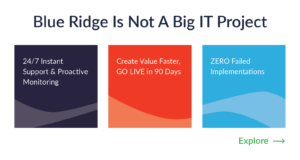I am not here to discuss whether reindeer power is 100 percent green and/or sustainable. I do know that after watching the movie Elf that Santa did need help of some fossil fuels and a crowd chanting “I believe” to continue its journey from Central Park, New York. What does the future hold for supply chain planning of power sources for his sleigh and our more traditional light weight vehicles? How does one predict and forecast parts for the unknown?
There is no doubt that the power plants of our vehicles will be some type of electrification in the future. Today the combination of technologies around hybrid type and pure electric vehicles continues to be deployed like a “wild west” frontier story. As adoption grows globally and trends vary by country, similar problems exist for R&D organizations and supply chain planners.
Which battery technology and crystal ball should supply chain planners use to solve issues of: not enough range; excessive charging times; raw materials shortages and impacts on the environment; and finally, too much mass and cost? After a decade of rapid growth, in 2020 the global electric car market hit the 10 million marks, a 43% increase over 2019. Battery electric vehicles (BEVs) accounted for two-thirds of new electric car registrations and two-thirds of the inventories in 2020.
As technology quickly changes and Moore’s Law takes hold, forecasting by looking in the rear-view mirror is not as applicable for new product disruption. In the case of batteries, Lithium-ion based batteries, while growing quickly in the development labs of engineers is starting to face challenges from Solid-State batteries. With the lead times of automotive concepts years in the making, the challenges facing automotive supply OEM planners is no different than those planning replacement parts or other advancing technologies. What kind of methods and approaches are proving successful?
Existing forecasting algorithms exist and using artificial intelligence from companies, like Blue Ridge Global, can detect patterns and auto-select a “best fit” algorithm from various data patterns is very useful. The thing to consider with great technological advances is that even though we perceive them as step functions, they are small evolutionary steps that are bundled and brought to market.
Traditional forecasting needs two to five years of sales data to guarantee an acceptable level of accuracy. With new items, you have no sales history. Still, you can’t neglect predicting demand as it drives multiple important processes, from procurement to logistics management to marketing support.
Machine learning has proven effective in complicated scenarios by analyzing data from past launches and spotting patterns of common demand behaviors enabling distributors and manufacturers to improve sales forecast accuracy significantly. 
Incorporating causal data points beyond history are critical in determining whether the units of a new technology to a specific problem will be sufficient while determining the rate of growth of the specific technology for the specific needs. For example, the lithium-ion battery needs of a cell phone are very different from the need of an automobile. So as the technology advances incrementally, different market demands occur for the same technology.
In the automotive and aftermarket industry new technology introductions are being developed and brought to market at an alarming new rate which makes the forecasting task much more difficult. In this scenario, a demand estimation process involves examining consumer trends, seasonality, and other external factors including historical data tied to previous similar offerings.
For batteries specifically, the challenge for supply chain planners is managing future demand requirements and the suppliers of new batteries and recycled batteries from a very decentralized industry. Since an EV battery represents most of the cost of the vehicle, aftermarkets can use new and recycled batteries in the consumer quests to prolong life of what is being viewed as another disposable asset as in other electronics and mobile markets.
This increasing dependency between forward and reverse supply chain require a coordinated ESG approach for organizations. The decision planning and execution of end-of-life options is effectively made by the reverse supply chain while the demand arises from the forward supply chain.
So as Santa’s sleigh becomes more electrified over the upcoming years and technology evolves, Santa may have on his wish list new features for his sleigh besides the most efficient batteries. He may be asking the elves for auto-pilot steering for the reindeers, and maybe even a cupholder.














